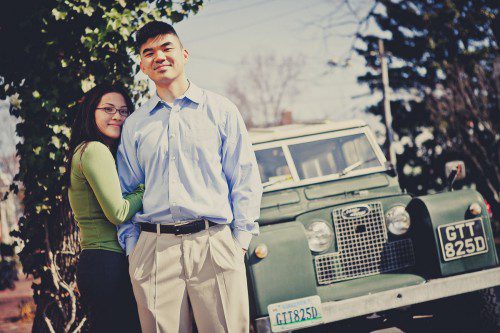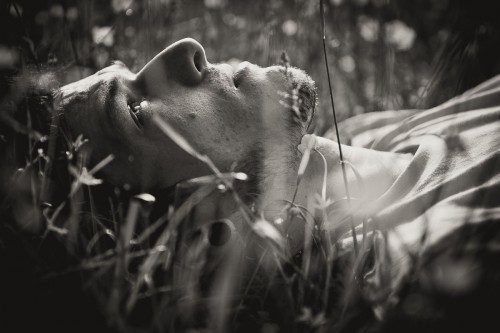It’s common to hear someone say, “I am my own worst critic”. The idea that we judge ourselves more harshly than anyone else, is merited. But so are that critic’s comments. The statement is rendered true by virtue of the critic saying it. That very particular critic.

Image by William Petruzzo
The Only Right Way is the Way You Intend to Do it
As budding photographers, we’ll obsess. “It is still too yellow, ugh this image sucks”, “The aisle is just full of wedding guests during the ceremony, ugh this image sucks”. All of those statements are true.
What is this power that the critic, that very special critic, wields that they can make something true simply by saying it? Simply by feeling it? It’s the power of the artist. The artist gets to render judgement over his or her creation, whether it is good or bad. Their judgement is true and binding, if only in this limited courtroom of personal satisfaction. But the story doesn’t end there.
Artists have another power too, albeit with some caveats. When an artist declares for themselves that his or her work is good, other artists and non-artists tend to start agreeing. How does that make sense? Isn’t there any objective measure? No.
Because art, as a concept, and so photography by extension, is intimately entangled with intention. The ‘quality’ of art is always ambiguous, but the intentions of the creator introduce some clarity. And the artist's response to his or her self-assessed ‘success’ or ‘failure’ brings even more lucidity.
Photographers are artists of a particular variety. We’re a little geekier, I think; A lot of us are mathematicians and engineers, Tinkerers, problem solvers. We tend to want a universal metric to exist by which we can say that the images we are creating are good. Fortunately, a real one does not exist, or matter. What matters is the photographer’s own attitude toward what they create. Sometimes we have to rebuild the engine to figure out how to start it.
While many of us are accustomed to taking apart all that is wrong with our images, vowing never to “make that mistake again”. Or, looking for exactly the right conditions to prevent ‘errors’. But errors imply that there was a right way to do something. Nope, the only right way is the way you intend to do it.
I’ve heard photographers, and other artists, balk at that idea of the centrality of intention in the personal and public appraisal of art. But think about it.
“The image is too warm” — Try, “I really love how the warmth accentuates the sunset.”
“The aisle is too full of wedding guests during the ceremony” — Try, “I love how this image captures the excitement of the bride and groom’s community at such a pinnacle moment in their lives.”

Image by William Petruzzo
Learning to Find What We Like
Even though it feels like we’re learning how to do something correctly, we’re learning to find what we like. Maybe there are only a few things you do need to learn in order to start producing something that you like and you’re excited about. But when you put a negative spin on your own work, you reinforce a long and difficult list of prohibitions. Don’t do this, don’t do that, watch out for this, make sure not to do that.
Instead when we put a positive spin on our own work for ourselves, we reinforce a short list of attainable desires.
Okay, perhaps you wanted a nice level shot, with soft light falling on your subject’s face and a gentle hair light from the setting sun. But, instead, you got a silhouette that’s tilted obnoxiously to the left. Yes, all of that is very frustrating. Maybe, maybe, because you had exactly the idea you wanted in your head and you failed miserably. But, more likely, that description at the top of this paragraph was more of a vague idea of the ‘correct’ photo, achieved only by the careful avoidance of fatal mistakes.
I understand why you might not like the silhouette image you accidentally created. But here’s the challenge. Find something you do like about it. Maybe the photo is interesting in black and white. Why? Maybe the high contrast created some really interesting shapes in the shadows on your subject’s hair. How did that happen? How can I do it again?
When we start looking for what we like in an image, rather than what we ‘messed up’, we start building that short list of things we want to do on purpose. Things we’re excited to do again. Can you remember a time when you or someone around you did something cool, or almost did something cool, totally on accident? Like, throwing playing cards into a hat. What happened next? I’ll bet you or someone else tried to do it again.
The more we focus on the things we want to do, the list of prohibitions starts to get shorter and shorter and shorter. Eventually that list turns into a list of tools we can use whenever we need them.

Image by William Petruzzo
Create the Things No One Knows They Love Yet
Something else happens too. When we’re courageous enough to say “I like this thing I created, even though some of you don’t like it. Here’s why”, others start to agree with us. And when we say, “I like this thing I created, even though some of you don’t like it, and here’s what I learned while trying to do one thing, but coming back with another”, we reinforce our intention. We get better at being intentional. Moreover, we make ourselves explorers of art and creativity. We can create the things no one knows they love yet.
The attitude we have about our work influences the work we create–and the work we do not create. We can choose to take on a positive attitude toward ourselves, our photography and our artwork. And, we can look for the things we like, in what we otherwise might believe to be the abysmal waters of ‘failure’.
Of course, none of this is to say that we don’t learn from one another. Of course we do. But good critique seeks out and expands the intentions of the artist. The critique is “that tree should not be right behind her head”, but this is not very helpful. The same critique made useful to the artist is, “Did you consider the tree behind her head? If yes, why did you choose to leave it there? If no, how do you feel about it now?”.
Starting out, we don’t have to be good, we just have to find what we like. Then start doing those things on purpose, and push out from there into other things that perhaps we don’t yet know how to do on purpose. Perhaps when you thought about that wedding photo positively, you really started to like those wedding guests crowding your aisle shot. And funny enough, when you told the bride how much you liked that photo, she totally agreed! And the more you thought about all of that, you suddenly found yourself knowing just where you wanted to stand at your niece's Bat Mitzvah.
Get ready, there’s going to be a lot more of that coming!






6 Comments
Very thought provoking. I really like the idea of looking for what is good in an image, rather than going for the default position of looking for faults, in order to develop a bank of good things we would like to try again. I actually think that the digital medium doesn’t help with this – we are too used to perfection – also it is very good to not pass judgement on an image straight away but to come back to it much much later and possibly see it with fresh eyes. I think the digital camera makes us edit and delete far to easily and quickly and this leads to all sorts of problems. There is far more scope for “accidental creativity” when shooting on film as well I think!
The accidental creativity is still available to you, you just have to choose it now.
Here’s a couple of things I’ve done to help offset the way digital cameras can make you a lazy, brash photographer.
– Use a really small card, and only carry one spare. I have a few 512mb and 1gb cards. Only being able to carry between 25 and 50 images is a good way to increase the pressure.
– Turn off the display. Sometimes I’ll turn it off completely. No preview or anything. Or alternatively, you might tape a piece of cardboard over the menu buttons.
– Decide in advance which adjustments you can make. Whichever ones you want to be able to nail in the camera are the ones you want avoid.
I really enjoyed your article; naturally, I “like” many of my images I share on my site, but I probably tend to think to myself, more often than not, “well, the main reason I like them so much is simply because they’re mine, and I liked the subject matter, and the fact that I got an image I’m pleased with,” etc.
But if I’m honest with myself, I probably have a very different opinion of them (beyond my own likes) simply from hauling around in my head the {questionable} “collective notion of what constitutes fine photography” — ie, publication images, good old Ansel or any other “named” photographer you think of, or gallery-hung images, etc. — at which point I’m likely to think “well, my images, while I love them, clearly just aren’t ‘that’ kind of photography; therefore, I’m in no position to tout or promote or sell my work, since they satisfy me, but likely not as much the rest of the photography world…”
Your article will nudge me to rethink my mental attitudes about my images (which is a good thing, I believe!) To better express to myself what I really do like about my images, so that I may actually express it to others as well.
I’m very glad to hear you were encouraged by what I wrote here.
Sometimes the biggest difference between one of those named photographers and someone else is their willingness to say with enthusiasm “This is great, don’t you think?”
From our own limited perspective, it’s sometimes easiest to assume that while we like something, no one else will. But, there’s something like 300 million tons of people on the planet and, fortunately, none of us are all THAT unique. If you like something, the odds are someone else out there will too.
Aiming for perfection I encounter my own limits, and am disturbed by my insufficiency.
Technically I can always learn more, but to recognize and create something which is meaningful requires so much more. Oh yes, I know the classic rules of composition, and I try to be aware of them, while not letting them dictate how I interpret and the image I make. But it is not always so easy: I often feel like something is unfolding in front of me and I see as through a sensor darkly, and from time to time it comes together, and often it does not.
Still, I love the process, and I love being in the creative state. There is something wonderful about the moment and occasionally I even manage to render an image that is the testament to my having been in the right place, state and time.
“Aiming for perfection I encounter my own limits, and am disturbed by my insufficiency.”
Who’s perfection?
Get in the right state, and you are always in the right place and time!